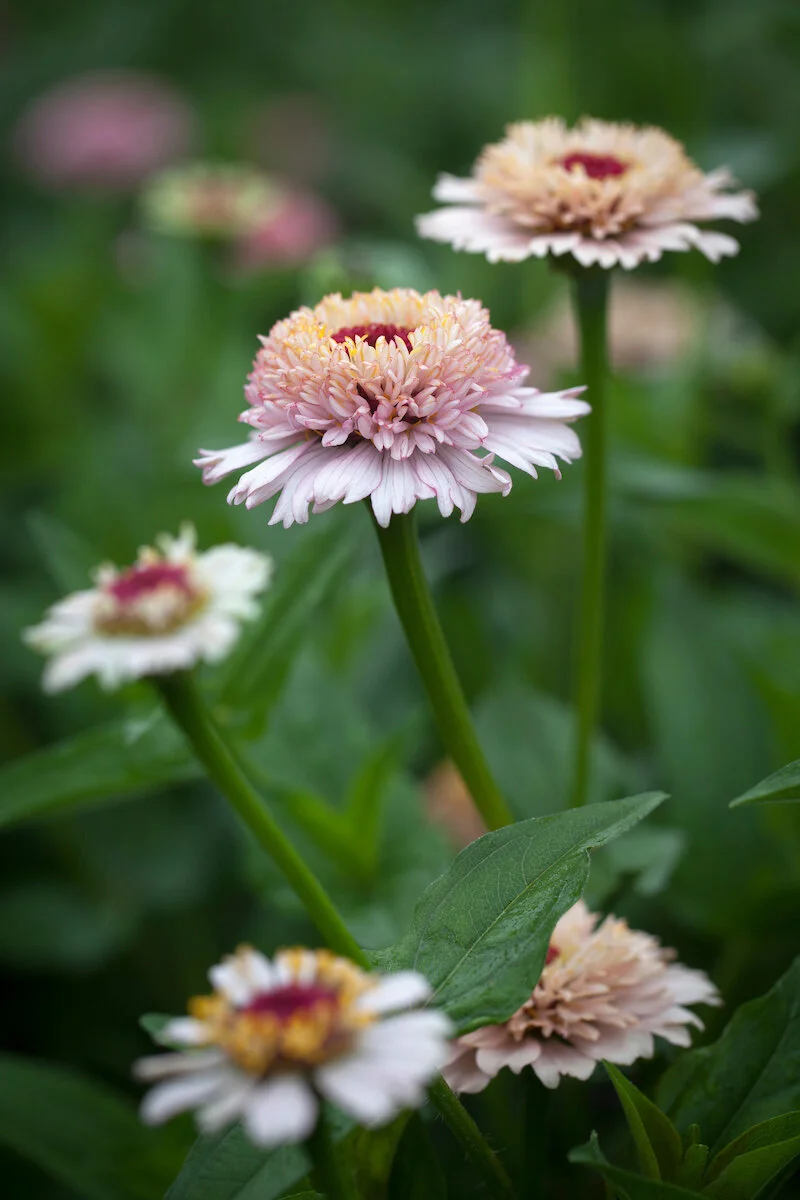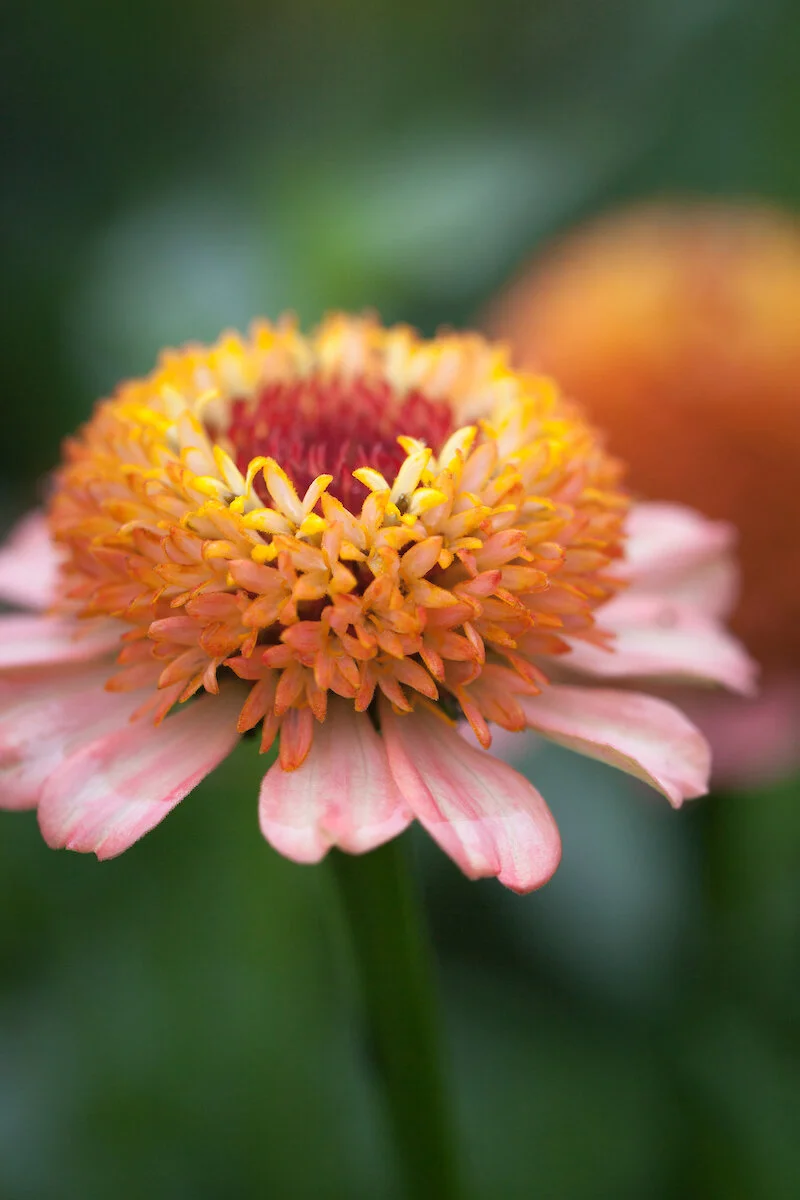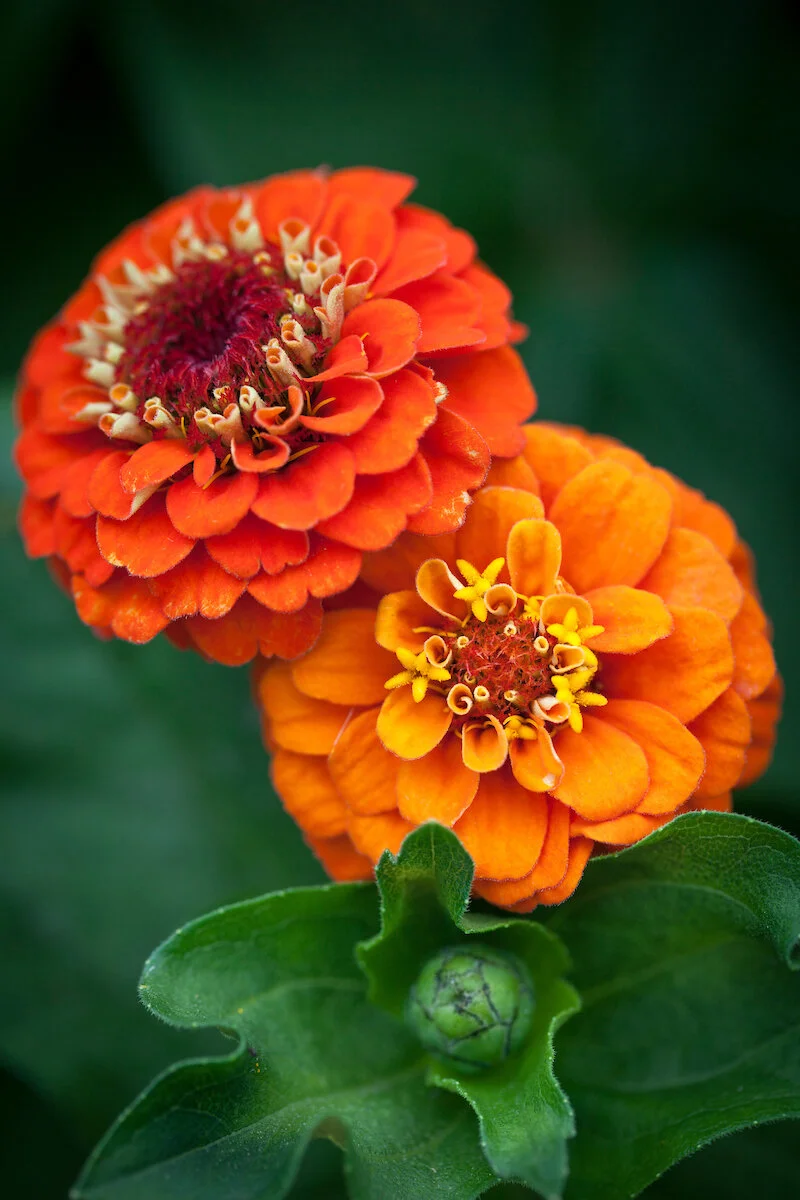Zinnia
Photographs by Sabina Rüber
Queen Red Lime
Zinderella Lilac
Zinderella Peach
Lilliput Orange
Zinnias bring a bit of exotic colour to our gardens, but are extremely easy to grow from seed. Native to South America, they were introduced relatively late to European gardens in the 18th century, when they were known as the ‘poorhouse flowers’ because they were so common and easy to grow. The original species weren’t much to write home about, but as breeding began in Victorian times, many more colours became available and the genus rose in popularity.
There are dozens and dozens to choose from, in single, semi-double and double forms of varying size, and in pretty much every colour apart from blue. Take your pick from the colour-range available, but here are a few that are particularly good for cutting. The ‘Benary’s Giant’ series is worth seeking out, with colours including lime, white, scarlet and wine. Growing up to 100cm, they make sturdy plants with large, double flowers. Another recently-developed group is the Zinderella series, which have interesting raised double centres with a frill of larger single petals round the edge like a tutu. ‘Zinderella Peach’ has lovely apricot-salmon flowers that look particularly good in an arrangement. ‘Queen Red Lime’ has the most unusual colour combination, with double flowers of pale red fading to lime at the edges of the petals.
Zinnias are a bit fussy about having their roots disturbed, so sow them in modular trays or coir Jiffy cells, so you can plant them straight out with minimal disruption. Alternatively you can sow them direct but only very late in the season when the soil has heated up and the weather is reliably warm. A good plan is to sow half the packet of seed indoors, and then the rest direct later in the season, even up to the beginning of July. If sowing under cover, don’t sow too early, otherwise the seedlings will fill their modules too quickly and it will still be too early to plant outside. Leave it until mid spring, and then sow two or three seeds to a module, covering them only very slightly with compost as they need light to germinate. They need warmth to germinate, so give them temperatures of 20-23C to start off with and then move them to a slightly cooler place once the seedlings have emerged, hopefully within a week or so. The seedlings can be prone to damping off, so don’t overwater the seedlings and keep the atmosphere dry. Plant them out in early summer in as sunny a spot as possible. They need a good rich soil and plenty of water, so keep watering them if the weather is dry.
Back to The Flower Garden main page. To buy a copy of The Flower Garden book click here.



